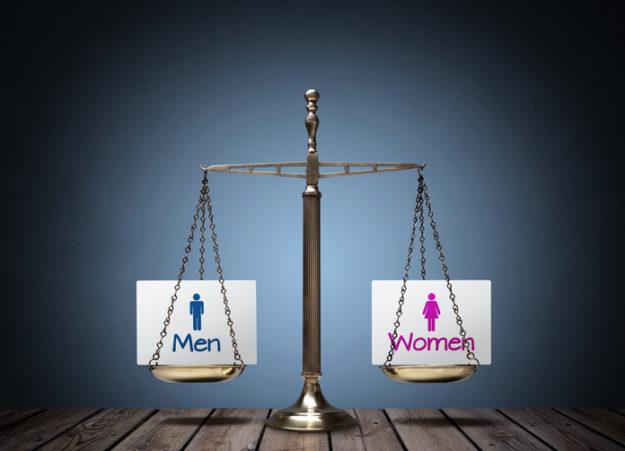Last week’s RTE programme about the gender gap in Ireland claimed to offer ‘the big picture’ about the reality of Irish women’s lives today. It certainly failed to do that. The women selected were atypical in terms of their chosen professions and life situations. The scrolling flow of statistics across the screen also failed to reflect the ‘big picture’.
The statistics cited were spun to paint a bleak picture of a backward, sexist even ‘misogynistic’ country. No reference was made to the fact that a 2017 study of gender inequality undertaken by the World Economic Forum placed Ireland in eighth place among 206 countries, ahead of France, Germany, the UK and even Denmark. It turns out we are already one of the most gender-equal societies on the planet.
The programme looked (among other things) at the challenges of three working career women, an airline pilot, a physicist and a local politician. In relative terms, these could be described as niche areas in the world of work. There was no representation of the great majority of women who work in more typical jobs and whose main concern is the long hours spent away from their young families. The vast majority of these women want the necessary supports and flexibility to allow them more time at home especially during their children’s early years. This is why so many mothers opt for part-time work, for instance, and are glad to do so.
The main issue for the two working mothers involved, the local politician and the pilot, was that work caused them to miss their child’s first steps or to be very far away when a child fell ill. It is very difficult to see how this fits into the narrative of structural disadvantage. Quite simply this is the reality of working outside the home for both mothers and fathers and always has been. It has nothing whatsoever to do with gender discrimination per se.
Physics is a particularly niche area among the academic disciplines. There are far more biologists, lawyers, accountants and doctors than physicists across both genders. Selecting one physicist to represent misogyny in academia does not offer anything close to a ‘full picture’, especially as it wasn’t at all clear that being a woman actually got in the way of her achieving what she wants in her career.
The fourth professional selected, a secondary school teacher, felt pressured because of child care costs to give up her job and take care of three very young children. Her main issues were loss of financial independence and the high level of job satisfaction she experienced as a teacher. Her issues were in striking contrast to the two other mothers who continued to work and felt their absence from their children their greatest challenge. It would have been interesting to hear the story of a working teacher who drops off young children at a creche in the early mornings and doesn’t get to collect them until late in the evening, perhaps after a lengthy, stressful commute from a dormer town.
The inclusion of an asylum seeker was really about the challenges of living in Direct Provision, challenges that men face as well.
The tragic case of the rape victim interviewed showed, among other things, how inadequate the State can be in properly responding to case like this.
The other participants were a young woman who claimed the drop-out rate from women’s team sports was due to underfunding, or in some respects no funding at all, and a female army officer who lost out on due promotion while on maternity leave. The latter brought legal proceedings against the State and won her case (although it is being appealed). This surely offers evidence that Ireland has effective machinery against sexist prejudice.
The unequal funding of male and female competitive team sports is a world-wide phenomenon and has more to do with far more people watching men’s sport than women’s sport and this naturally affects funding levels. Is it really all because of sexism that so few women watch women’s sport?
In the panel discussion that followed the programme, gender studies academic, Ailbhe Smyth asserted that the difficulties and challenges faced by all participants was on account of their gender, ‘ because they are women’. Such a conclusion had little basis in most of the stories recounted though they were clearly selected with the aim of supporting that conclusion. The public was simply not given the full picture.
(Research highlighting the differences between the preferred work/home balance of men and women can be found here).

















